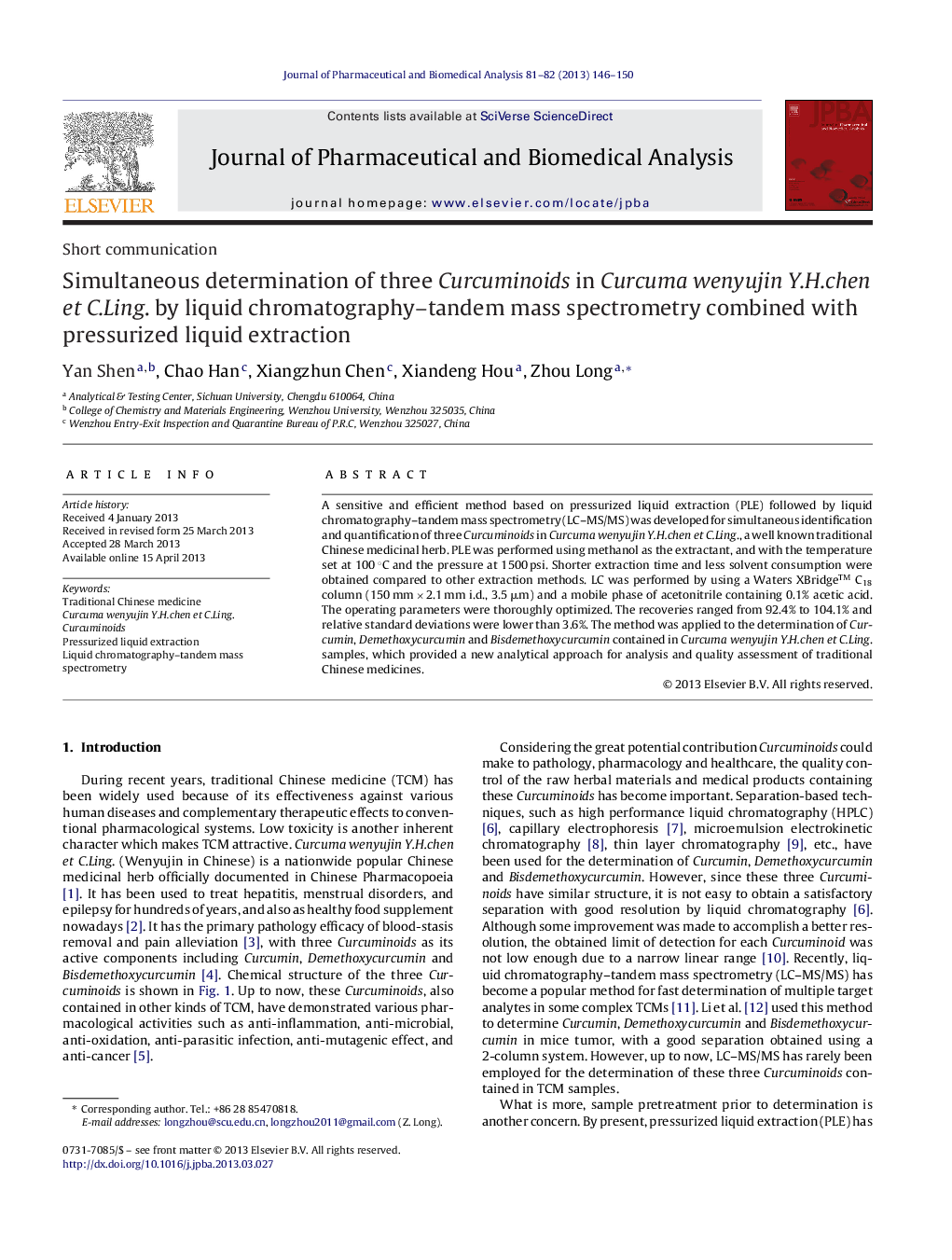| Article ID | Journal | Published Year | Pages | File Type |
|---|---|---|---|---|
| 1221247 | Journal of Pharmaceutical and Biomedical Analysis | 2013 | 5 Pages |
•PLE–LC–MS/MS was firstly used for analyzing Curcuma wenyujin Y.H.chen et C.Ling.•A green and efficient method was used for pretreating traditional Chinese medicine.•Similar Curcuminoids were determined simultaneously without complete separation.•Operating parameters of PLE–LC–MS/MS were thoroughly optimized.
A sensitive and efficient method based on pressurized liquid extraction (PLE) followed by liquid chromatography–tandem mass spectrometry (LC–MS/MS) was developed for simultaneous identification and quantification of three Curcuminoids in Curcuma wenyujin Y.H.chen et C.Ling., a well known traditional Chinese medicinal herb. PLE was performed using methanol as the extractant, and with the temperature set at 100 °C and the pressure at 1500 psi. Shorter extraction time and less solvent consumption were obtained compared to other extraction methods. LC was performed by using a Waters XBridge™ C18 column (150 mm × 2.1 mm i.d., 3.5 μm) and a mobile phase of acetonitrile containing 0.1% acetic acid. The operating parameters were thoroughly optimized. The recoveries ranged from 92.4% to 104.1% and relative standard deviations were lower than 3.6%. The method was applied to the determination of Curcumin, Demethoxycurcumin and Bisdemethoxycurcumin contained in Curcuma wenyujin Y.H.chen et C.Ling. samples, which provided a new analytical approach for analysis and quality assessment of traditional Chinese medicines.
Graphical abstractA method based on pressurized liquid extraction (PLE) followed by determination with liquid chromatography–tandem mass spectrometry (LC–MS/MS) was developed for identification and quantification of Curcumin, Demethoxycurcumin and Bisdemethoxycurcumin in Curcuma wenyujin Y.H.chen et C.Ling., a well known traditional Chinese medicinal herb. The operating parameters were thoroughly optimized. Shorter extraction time and less solvent consumption were obtained from PLE compared to other extraction methods. The recoveries ranged from 92.4% to 104%, and relative standard deviations were lower than 3.6%. The method provided a new analytical approach for quality assessment on traditional Chinese medicines.Figure optionsDownload full-size imageDownload as PowerPoint slide
